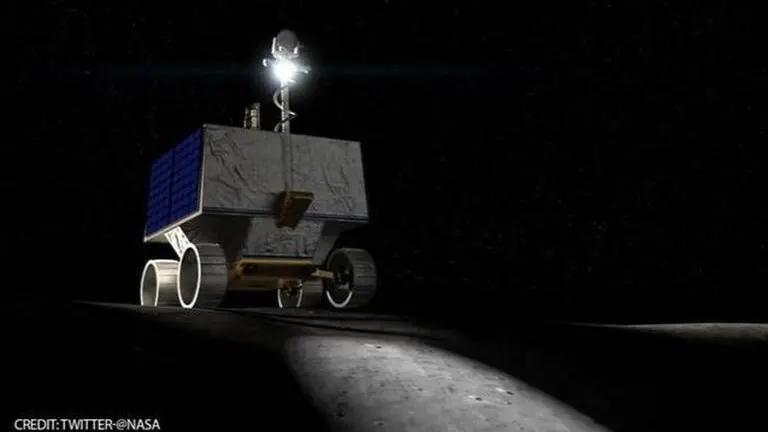Updated 21 September 2021 at 18:33 IST
Nasa's Artemis mission rover VIPER to land on Nobile crater of Moon's South Pole
The VIPER has been assigned with a task to map and explore the moon's surface and sub-surface of the Permanently Shadowed Regions for water, other resources.
- Science News
- 3 min read

In a recent announcement, NASA revealed that the Volatiles Investigating Polar Exploration Rover (VIPER) will be deployed in the Moon’s south pole in 2023, under the ambitious Artemis mission. The purpose of the rover is to map the unexplored regions of the Moon and conclude if ice or any other potential resources exist in those areas, said the agency via its official website. The upcoming Artemis mission will see the humans return to the Moon after over six decades.
Exploring Moon’s Permanently Shadowed Region
The VIPER has been assigned with a task to map and explore the surface and sub-surface of the Permanently Shadowed Regions (PSR) for water and other resources. Thomas Zurbuchen, associate administrator for science at NASA informed that VIPER will land on the Nobile crater of the Moon, as it shows the most promise in this scientific pursuit. He revealed that upon touchdown the rover will provide ground truth measurements for the presence of water and other resources in the undiscovered south pole.
The southern pole of the Moon is one of the coldest areas in our solar system, says NASA. Till now, it has been studied only through remote sensing instruments, including those on NASA’s Lunar Reconnaissance Orbiter and the Lunar Crater Observation and Sensing Satellite. The agency on the selected site informed that this impact crater was formed through a collision with another smaller celestial body and has traces of ice as it is permanently shadowed.
🌒 News: Our robotic VIPER rover will land near the western edge of the Nobile Crater at the Moon’s South Pole. The site has never been explored from the lunar surface. There, it will search for water & resources to support #Artemis missions: https://t.co/fyDAhxKe6k pic.twitter.com/pKNqHWOKkW
— NASA (@NASA) September 20, 2021
The VIPER, to be blasted off on a SpaceX Falcon-Heavy rocket, the rover will be utilised for a total of 100 days, said NASA. It will reportedly examine an area of 93 square kilometres in the Nobile region and will collect samples from at least three drill locations. As per NASA, samples from a variety of depths and temperatures will help scientists to better predict the presence of ice on the Moon. Based on this, the scientists will be able to produce a global resource map that would allow understanding the Moon’s overall distribution of resources.
Advertisement
India’s quest to PSRs
Recently, ISRO’s Chandrayaan-2 spacecraft had picked up 'unambiguous detection of water ice' on the Moon’s PSRs via the Dual Frequency Synthetic Aperture Radar (DFSAR). India had also ventured to the Moon’s south pole under the Chandrayaan-2 mission, where it had aimed to land a rover for examining the region. However, the lander that was carrying the rover crashed after losing control 500m above the lunar surface.
(IMAGE: TWITTER/@NASA)
Published By : Harsh Vardhan
Published On: 21 September 2021 at 18:33 IST
